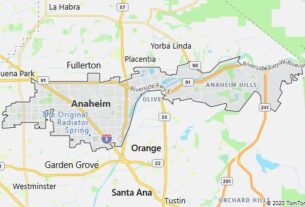The US territory draws its fundamental elements from the great structural complexes of North America; generally oriented in the meridian direction, they are, from E to W, the system of the Appalachians (Appalachian Mountains), the Central Plains, the mountain range of the Rocky Mountains (Rocky Mountains) with the connected highlands and coastal ranges facing the Pacific Ocean. These elements introduce quite marked regional varieties, even if generally without abrupt solutions of continuity; they explain, with the diversity of climatic, pedological and vegetal characteristics, the imposition of different agricultural activities and therefore also, to a certain extent, of the same territorial organization, although this depends in a decisive way on the large urban centers. The entire eastern section of the USA is dominated by the presence of the Appalachians. The chain, which also affects Canada, extends from NE to SW for approx. 2500 km, on average 200-300 km wide, dates back to the Paleozoic (the orogenetic processes occurred, at intervals, from the Ordovician to the Permian) and reaches its maximum height in Mount Mitchell (2037 m), in the Blue Ridge Mountains. United States is a country located in North America according to ARISTMARKETING.COM.
Although very level and eroded, in the southern section the Appalachians still show the characteristic folded structure, particularly highlighted in the Allegheny range and which morphologically results in a succession of long ridges alternating with flat and wide valley bottoms, so much so as to constitute a repeated motif that justifies the unitary name of Great Valley, given precisely to this valley set. The rivers that flow there, generally meandering, sometimes open gaps (watergaps) to get out of the chain, both on the internal side and on the external one. AN of the great furrow marked by the Hudson River, the Appalachian system – which in this northern section generically has the name of the New England Mountains while in the southern one the Allegheny range stands out – loses its folded structure and appears as a succession of massive and isolated ridges among which the Green Mountains and the White Mountains stand out (Mount Washington, 1917 m). The orographic features are more confused, however the valleys are mainly oriented towards S; it is these valleys that give rise on the coast to the wide estuaries (Hudson, Delaware etc.) that made the fortune of the US Atlantic facade. Morphologically they are the recent result of a deep marine ingression; and in fact the continental shelf is here wide and furrowed by characteristic submarine canyons which represent the continuation of the river outlets. Geologically, the Appalachian relief presents different structures, including crystalline and schist masses of archaeozoic origin, Palaeozoic volcanic and sedimentary formations. The latter, in the northern section of the Allegheny, contain large coal deposits, a primary factor in the region’s industrial success.
In some respects the whole Appalachian area can make us think of the Europe of ancient massifs (of which in fact it is geologically the continuation) characterized by mature mountain profiles, without harshness, by easy transits along the wide valleys. Towards the east, the relief slopes down into a piedmont belt, the Piedmont, made up of the cones of the Appalachian rivers that overlap with Cenozoic formations. It overlooks the alluvial coastal plain from which it is separated, along the so-called Falls Line (line of waterfalls), from a structural “step”, which represents the eastern orographic limit of the Appalachian system and forces the rivers to jump abruptly. The coastal plain is remarkably wide to the S of Cape Hatteras, where it welcomes marshy areas, giving rise to a lagoon-like morphology. Wide analogies are found with the peninsula of Florida, stretching towards the S for approx. 500 km to divide the waters of the Atlantic Ocean from those of the Gulf of Mexico: it is an ancient plateau, mostly covered by calcareous sedimentary soils that have not undergone any tectonic disturbance and which therefore give rise to a flat territory, located a few meters above the sea level and therefore from the drainage. This explains the swampy areas of Florida, especially in the southern section, where there are large lake basins (such as Lake Okeechobee) and the amphibious areas known as the Everglades.



